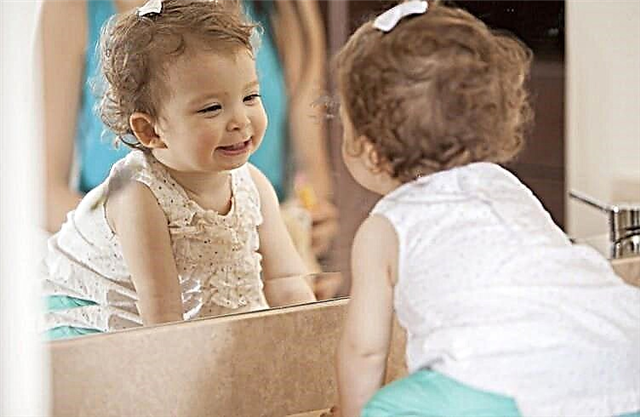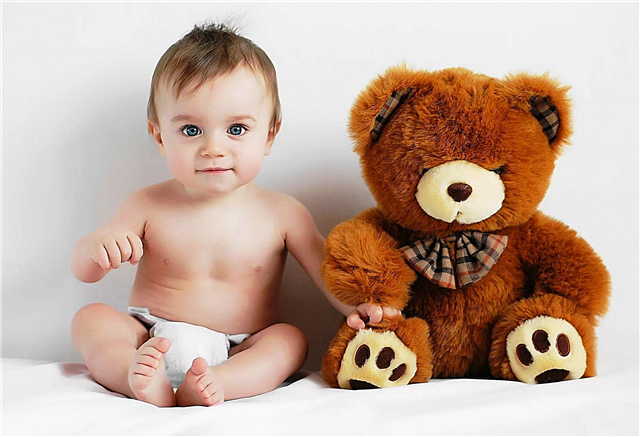
Children are very curious and taste the world around with great pleasure. Therefore, parents are far from always able to protect them from swallowing various foreign objects or inhaling their parts.
Yevgeny Komarovsky, a children's doctor of the highest category, tells how to act in such a situation.

What chokes and is it dangerous?
There are a wide variety of items that a child can easily swallow or inhale, and the degree of severity of the situation must be assessed based on what exactly is swallowed by the baby. It is clear that a small and smooth cherry pit, which has entered the digestive tract, will not cause any harm to the baby. You don't have to worry - after a while the crumb successfully goes to the toilet and the same cherry bone will be found in the feces. The same can be said for situations in which a child suddenly swallows gum.
Therefore, parents should evaluate the surface of the swallowed object as well as its size.
Even if a child has swallowed a plastic part from a designer, it is only necessary to talk about the danger if this part has sharp uneven edges, which theoretically can injure the esophagus or intestinal walls.

The most dangerous items that children often swallow are:
- button batteries and conventional pen batteries;
- screws;
- small nails;
- pins;
- coins;
- large buttons;
- glass;
- bones from plum, fish, chicken, date.
In this case, parents must definitely contact a medical institution, even if the child looks good and does not show any negative symptoms. Signs may appear later, and it is important to avoid this.

However, a foreign body in the airway rarely "behaves" without symptoms. And such an incident often requires emergency assistance. Indeed, a swallowed foreign object itself, even if it is paper, a napkin, or if the baby choked on food, may well harm the child, but much more often he is harmed by unreasonable and incorrect actions of parents frightened to colic.
Parents should at least roughly imagine not only the size and texture of the swallowed, but also the volume.
A harmless cherry seed will not harm if there is one, two or three at most. But now a handful of such bones can cause intestinal obstruction.

What to do?
If a child swallows a foreign object and begins to vomit, then Komarovsky does not advise parents to interfere in this most important process - the gag reflex is very wisely invented by nature precisely to rid the body of a foreign, outsider.
If the object is swallowed, and the baby does not show reflex attempts to get rid of it, but the object belongs to a dangerous group, it is important to immediately call an ambulance. While the doctors are traveling, the child should not be given anything from food or drink.
If the object is safe and does not bother the child in any way, then it is worth waiting until it leaves the child's body in a completely natural way along with the feces during bowel movements.

It is much more difficult to independently deal with the situation when the child inhaled a small object. A foreign body stuck in the trachea manifests itself as a strong suffocating cough, limited inhalation, cyanosis (blue skin and lips) may appear, the child may bulge his eyes, he suffocates and is even able to lose consciousness.
If the child is breathing, nothing needs to be done, you need to wait for the ambulance. The most that needs to be done if the baby has spontaneous breathing is to open the vents wide open and provide a large amount of normal fresh air.
Attempts to knock the child on the back, shake it upside down to no good will do it - the object can move further along the trachea and lead to mechanical asphyxia.

If a foreign body is stuck in the gastrointestinal tract, the symptoms will depend on where it happened. When the esophagus is blocked, it becomes difficult to swallow, saliva flows heavily, there is pain in the chest region.
If the object is stuck in the stomach, the pain will be in the stomach, there will be an unproductive urge to vomit. With a blockage of the intestine, abdominal pain occurs, blood and mucus appears in the stool, there may be no bowel movements, and bloating can be observed.


First aid
Komarovsky advises to provide first aid only if the child is not breathing. In this case, the Heimlich trick, which every mother should know, will help. While the baby is coughing, this means that there is a chance that the body itself will get rid of the foreign object.
If the coughing has stopped and the object did not come out, you need to move on to active actions.
- Take a position behind the child, standing with the front of the body towards his back, hug him from behind with your arms.
- Squeeze your right hand into a fist and place the bend of your thumb on the tummy between the navel and the ribs.
- The open palm of the second hand is placed on the fist from above and with quick and precise movements, the fist is pressed into the stomach.
- Repeat as many times as needed to clear the airways. If everything worked out, the skin acquires a normal color, breathing is restored.

If the child is small, place him on a firm, level surface (on the floor) and take a kneeling position next to him. The middle and index fingers of the mother's hands should be put to the child in the same epigastric region described above, it should be pressed gently, up towards the diaphragm.

If the child pushed something into his nose, Komarovsky recommends using a technique called "mom's kiss." The admission was coined in 1965 by a Canadian emergency physician, Stephanie Cook.
The essence of the method is as follows:
- the mother tightly puts her lips to the child's mouth;
- hand closes the nostril free of foreign objects;
- inhales strongly into the baby's mouth;
- the air flow "presses" on the foreign object and it leaves the place in the nasal passages.
The method helps in about 60% of cases. But even if the reception was successful, the child should still be examined by a doctor as soon as possible.

For another first aid reception from Dr. Komarovsky, see the next video.
Prohibited parenting
Dr. Komarovsky does not recommend taking any active action if the child is breathing, he is conscious, even if breathing is difficult.
While the ambulance is on its way, an open window and vigilant observation of the baby's behavior and well-being from adults will be enough.
No need to try to push objects stuck in the esophagus or nose by any means at hand. This can be reached by parents who have ever met or heard from the older generation recommendations to give a choking child something harsh, such as a bread crust or rusk.

If a potentially dangerous object is swallowed and there is no vomiting, some parents risk giving a laxative or mechanically induce vomiting by pressing on the root of the tongue. An object that is too sharp, such as glass, if swallowed safely, can seriously injure the esophagus when vomiting.
While you are waiting for the arrival of the ambulance team, do not allow a child who is choking to actively move, jump, run. And all the more, there is no need to shake him, pound him on the back, scream, panic and additionally frighten the child.

How to prevent accidents?
Careful attention to prevention can help avoid unpleasant incidents and their possible negative consequences.
Parents need to remember and strictly follow the following recommendations.
- In the diet of a baby under three years old, there should be no food with bones - fish, chicken, fruits and vegetables must be peeled.
- Do not allow your child to eat something while playing, while actively interacting with other children. Laughter while eating, a hasty breath may well cause the child to choke and begin to choke.
- Make sure that the baby does not have toys with small parts, so that he does not have free access to small objects at all.
- If the child, due to age, is already able to understand what exactly the parents want to convey to him, it is necessary to explain the danger of swallowing and inhaling foreign objects so that the child does not even try to push one of them into the nose or throat, even if the parents are not nearby.



